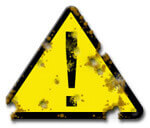Recommendations for Safe Use of Neodymium Magnets.
Neodymium magnets exceed other types of magnets in strength
Neodymium magnets are extremely powerful magnets that can be dangerous in certain situations. It is important to remember that neodymium magnets are extremely powerful and can attract other metal objects, which can lead to injury or destruction to the body.
If you need to work with neodymium magnets, it is important to exercise caution and follow appropriate safety measures, such as wearing appropriate protective equipment (e.g., safety goggles), avoiding working with magnets near computers or other electronic devices, and keeping magnets apart from each other to prevent them from attracting and potentially causing harm or projectiles to be ejected in case of collision, which can pose a threat to your vision.
Neodymium magnets are also extremely hard and fragile, so it is advisable to avoid strikes, throwing, or dropping magnets as they can quickly crack or shatter.
In conclusion, neodymium magnets are powerful tools that can be hazardous if not used with proper care, so it is important to observe security precautions when using them.

To separate magnets, you need to grasp the top magnet and slide it out of the stack, then pull it apart swiftly.
You should not drill or heat neodymium magnets.
When holding magnets in your hands, you should remember to keep your hands at a proper distance from each other.
If you injure yourself and experience significant injury, seek immediate medical help.
Work on a metal table or on a surface such that the magnets stay in place, where you set them and to not "fly" joined to others.
Quickly apply ice to any pinched skin to reduce swelling. In the case of contact with larger magnets, significant injuries can occur.
Magnets retain their magnetic properties for centuries when properly handled and stored at room temperature.
Maintain magnets at least 20 cm away from vulnerable electronic devices and storage media.
When working with magnets, you should wear safety glasses or work gloves (if necessary).
Children should NEVER be allowed to play with neodymium magnets.
Exercise Caution with Neodymium Magnets
Neodymium magnets are known for being fragile, which can cause them to crumble.
In the event of a collision between two neodymium magnets, it can result in them getting chipped. Despite being made of metal and coated with a shiny nickel plating, they are not as hard as steel. In the case of a collision between two magnets, there can be a scattering of small sharp metal fragments in different directions. Protecting your eyes is essential.
Neodymium magnets can attract to each other due to their immense internal force, causing the skin and other body parts to get pinched and resulting in significant injuries.
Magnets will attract each other within a distance of several to around 10 cm from each other. Don't put your fingers in the path of magnet attraction, as a significant injury may occur. Magnets, depending on their size, are able even cut off a finger or alternatively there can be a serious pressure or even a fracture.
People with pacemakers are advised to avoid neodymium magnets.
Neodymium magnets produce strong magnetic fields that can interfere with the operation of a heart pacemaker. However, if the magnetic field does not affect the device, it can damage its components or deactivate the device when it is in a magnetic field.
The magnet coating contains nickel, so be cautious if you have a nickel allergy.
Studies clearly indicate a small percentage of people who suffer from metal allergies such as nickel. An allergic reaction often manifests as skin redness and rash. If you have a nickel allergy, you can try wearing gloves or simply avoid direct contact with nickel-plated neodymium magnets.
Dust and powder from neodymium magnets are flammable.
Do not attempt to drill into neodymium magnets. Mechanical processing is also not recommended. If the magnet is crushed into fine powder or dust, it becomes highly flammable.
Neodymium magnets can become demagnetized at high temperatures.
Whilst Neodymium magnets can lose their magnetic properties at high temperatures, it's important to note that the extent of this effect can vary based on factors such as the magnet's material, shape, and intended application.
Never bring neodymium magnets close to a phone and GPS.
Magnetic fields can interfere with compasses and magnetometers used in aviation and maritime navigation, as well as internal compasses of smartphones and GPS devices. There are neodymium magnets in every smartphone, for example, in the microphone and speakers.
Under no circumstances should neodymium magnets be placed near a computer HDD, TV, and wallet.
Strong magnetic fields emitted by neodymium magnets can destroy magnetic storage media such as floppy disks, credit cards, magnetic ID cards, cassette tapes, video tapes, or other devices. They can also damage televisions, VCRs, computer monitors, and CRT displays. You should especially avoid placing neodymium magnets near electronic devices.
Magnets are not toys, youngest should not play with them.
Remember that neodymium magnets are not toys. Be cautious and make sure no child plays with them. Small magnets can pose a serious choking hazard. If multiple magnets are swallowed, they can attract to each other through the intestinal walls, causing severe injuries, and even death.
Neodymium magnets are the most powerful, most remarkable magnets on the planet, and the surprising force between them can surprise you at first.
Make sure to review all the information we have provided. This will help you avoid harm to your body and damage to the magnets.
Be careful!
In order to show why neodymium magnets are so dangerous, read the article - How very dangerous are powerful neodymium magnets?.

